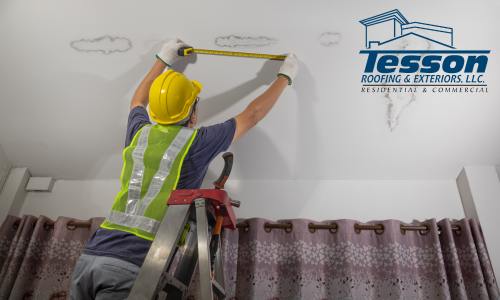Knowing what kind of leaks are most common is an important first step to identifying and fixing roof leaks. Arm yourself with information so you can prevent leaks before they start.
- Damaged or Missing Shingles: Shingles can be damaged by severe weather conditions such as hail, wind, or heavy rain. Missing or broken shingles can expose the underlying roof structure to water, leading to leaks.
- Roof Flashing Issues: Flashing is used to seal joints and seams on the roof, such as chimneys, skylights, and vents. If the flashing is improperly installed or damaged, water can seep through these vulnerable points.
- Cracked or Damaged Roof Vent Boot: The roof vent boot is a rubber covering around plumbing vent pipes that protrude from the roof. Over time, it can crack or deteriorate, allowing water to enter the attic and interior spaces.
- Ice Dams: In cold climates, ice dams can form on the roof’s edge, preventing melting snow from draining properly. This pooled water can seep under shingles and cause leaks.
- Clogged Gutters: When gutters are clogged with debris, water can overflow and damage the roof’s edge. This can lead to leaks and also compromise the foundation of the house.
- Skylight Leaks: Skylights can develop leaks due to damaged seals or improper installation. Water can seep around the skylight frame and cause leaks in the ceiling.
- Condensation: Inadequate attic ventilation can cause condensation to form in the attic. Over time, this moisture can damage the roof structure and lead to leaks.
- Flat Roof Problems: Flat roofs are more prone to leaks because they lack the slope that helps water run off. Ponding water and deteriorating roofing materials can result in leaks.
- Hail Damage: Hailstorms can cause significant damage to roofing materials, leading to punctures and cracks that allow water to seep in.
- Tree Damage: Falling branches or trees during storms can puncture the roof, creating immediate leaks.
Regular roof inspections and maintenance can help identify these issues early, preventing extensive damage and costly repairs. If you suspect a roof leak, it’s essential to contact a professional roofer to assess the situation and perform necessary repairs.
